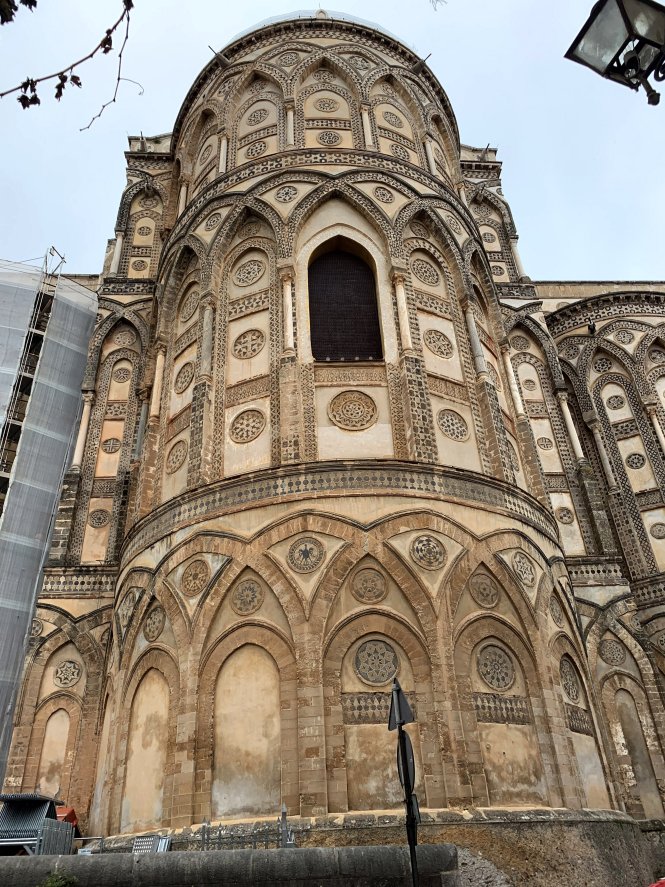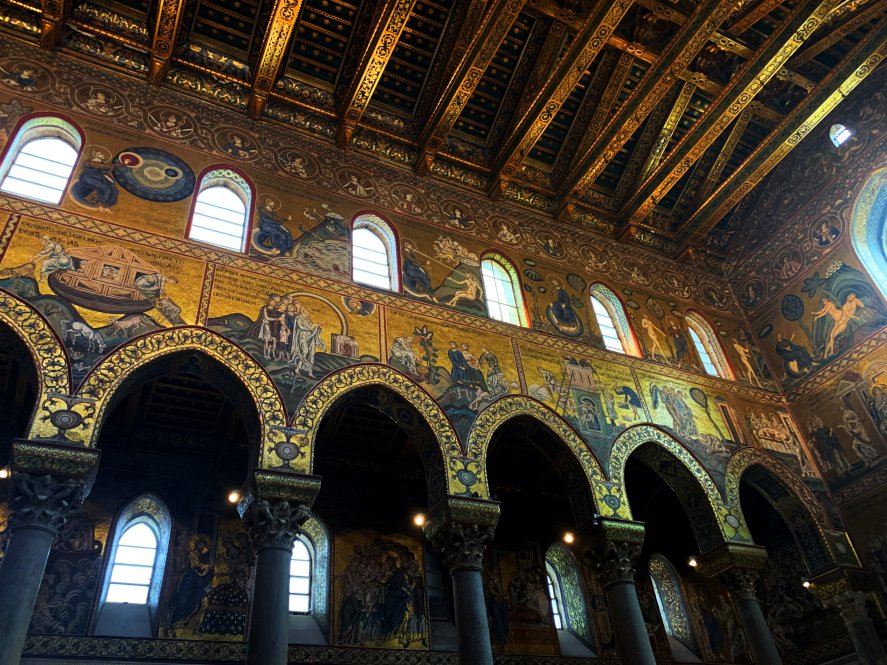Monreale Cathedral

Despite bizarre legends that the cathedral was built where King William II
(1166-89) fell asleep and had a dream which led him to buried treasure,
it is far more likely that the church was part of a plan to overshadow
the work of Bishop Walter Ophamil of Palermo (1168-91), who was upgrading Palermo cathedral.
Work on Monreale started in 1172 and was confirmed by Pope Alexander
III (1159-81) with a bull on 30 December 1174 and converted from an
abbey into a cathedral for the new archdiocese of Monreale in 1178 - an
act confirmed by Pope Lucius III (1181-85). Improvements must
have taken place during the thirteenth century as Pope Clement IV
(1265-68) attended the consecration of the building in 1267.
Three years later King Louis IX of France, the brother of King Charles I (1266-85), was buried here after his body was returned from their failed Crusade to Tunis.
 Description
Description
The church is an odd mix of east and west. The basilican nave is
wide, but the aisles narrow, while their monolithic columns are of grey
oriental granite, peculiarly except for one, which is of marble.
There is a high clerestory with wide twin light windows. At the
west end of the nave are 2 projecting towers, with a narthex between
them. The original large open atrium has been replaced by a
Renaissance portico and the towers have had their upper storeys altered
to make them surprisingly different heights. To the east the
exterior of the apses are highly decorated with blind arcades, while
within the church are the great glass mosaics, executed in a Byzantine
style.
To the south stand the cloister with its famous 216 pointed decorated
archebs standing on pairs of columns in white marble . The capitals are
of marble and carved with unique allegories, biblical scenes or foliage. In the corner stands a marble fountain of the monks' lavatorium.
Around the cloister were the monastic buildings and archiepiscopal
palace which in turn were surrounded by a towered precinct wall all of
which has been much damaged and in places rebuilt.
The church was struck by fire in 1811 which resulted in the destruction
of much of the original woodwork and also all the royal tombs.
These included those of William II (d.1189) and William I
(d.1166) with his wife, Margaret Navarre (d.1172+) and their two young
sons Roger (d.1161) and Henry (d.1172). In the same group was the
urn containing the viscera of King Louis XI (1226-70). Sadly,
afer the fire, these were rebuilt as very nineteenth century
remakes. Thankfully the early mosaics survived. Similar to
those in the palatine chapel they depict stories from both the new and
old Testaments. The glory of the mosaics, within the dome of the
central apse, is a half length figure of Jesus with a seated Virgin and
Child below. Flanking this in the other apses are the figures of
St Peter and St Paul. Latin and occasionally Greek inscriptions
explain each subject represented. The themes of the mosaics seem
to have been selected from the Menologion of Basil II (976-1025), which
would again show a Byzantine influence.
Why not join me at other Sicilian
castles and churches? Information on this and other tours can be found at Scholarly
Sojourns.
Copyright©2019
Paul Martin Remfry


 Description
Description